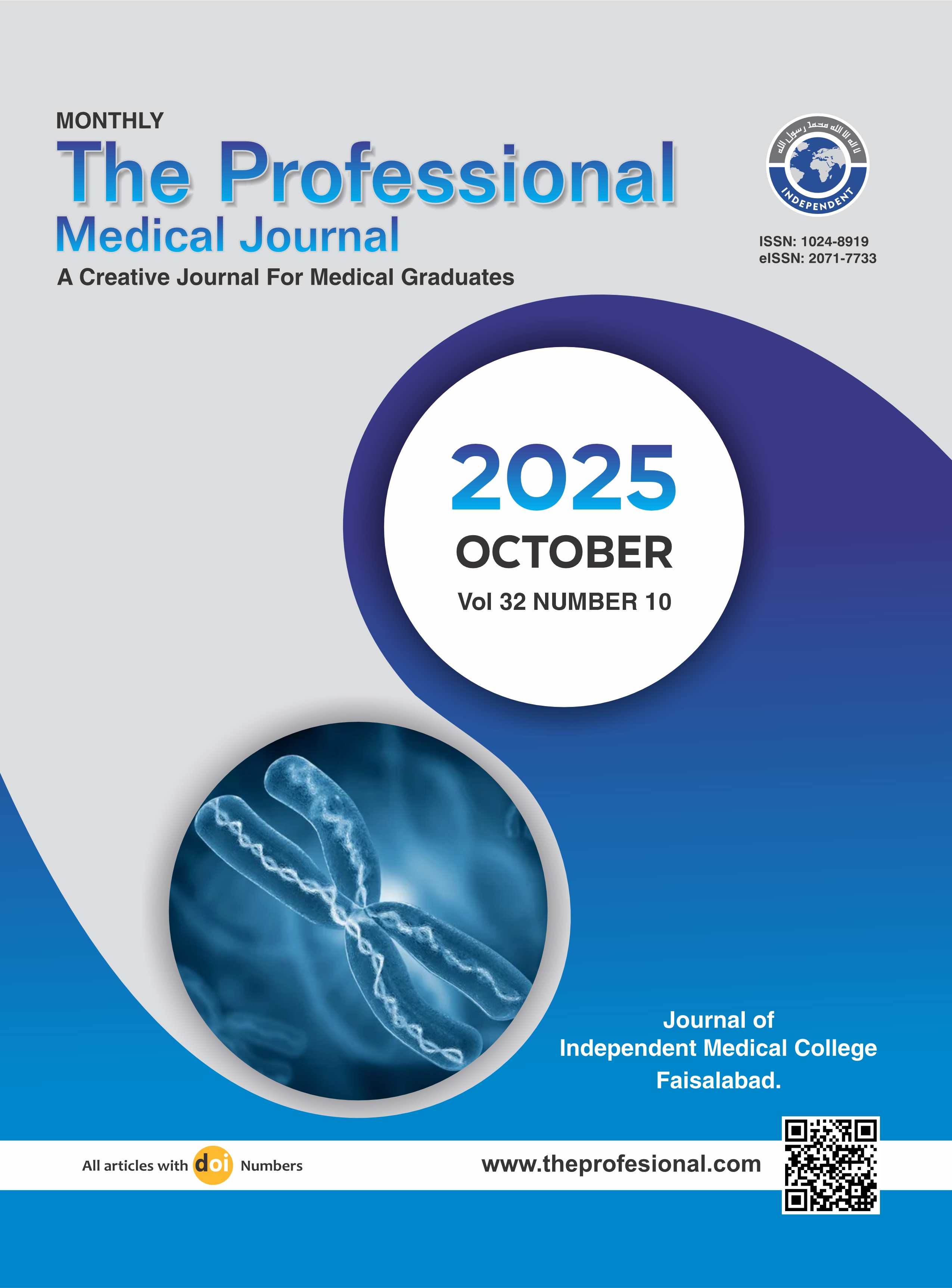Electrolyte imbalance and its association with the severity of dengue fever.
DOI:
https://doi.org/10.29309/TPMJ/2025.32.10.9936Keywords:
Dengue Fever, Fever, Hypernatremia, Hypocalcemia, HypokalemiaAbstract
Objective: To assess the electrolyte imbalance in the patients with dengue and severe dengue fever and correlate their abnormalities with the severity of illness in pediatric population. Study Design: Cross-sectional study. Setting: Department of Pediatrics, The National Institute of Child Health (NICH), Karachi, Pakistan. Period: November 2024 to April 2025. Methods: A total of 196 children aged 6 months to 12 years with dengue, confirmed by NS1 antigen or IgM ELISA, were enrolled using non-probability consecutive sampling. Data collected included demographic, clinical, and laboratory parameters, with patients classified according to WHO dengue severity criteria. Electrolyte disturbances were defined using standard cutoffs. Data analysis was performed using SPSS v24, applying the Chi-square test, with p < 0.05 considered significant. Results: In a totaof 196 children, the mean age was 4.9±3.6 years, while 50.5% children were male. There were 41 (20.9%) children who had dengue fever, 118 (60.2%) dengue with danger signs, and 37 (18.9%) had severe dengue. Hyponatremia was observed in 72 (36.7%) children, most frequent in dengue with danger signs (44.9%) and severe dengue (37.8%), while hypernatremia was seen only in severe dengue (24.3%). Hypokalemia and hypocalcemia were found in 19.4% and 58.2% of cases, respectively. All 17 (8.8%) deaths occurred in severe dengue and were associated with hyponatremia, hypernatremia, and hypocalcemia. Conclusion: Electrolyte imbalances are common in paediatric dengue, with hyponatremia, hypocalcemia, and hypernatremia strongly associated with increased severity and mortality.
Downloads
Published
Issue
Section
License
Copyright (c) 2025 The Professional Medical Journal

This work is licensed under a Creative Commons Attribution-NonCommercial 4.0 International License.


